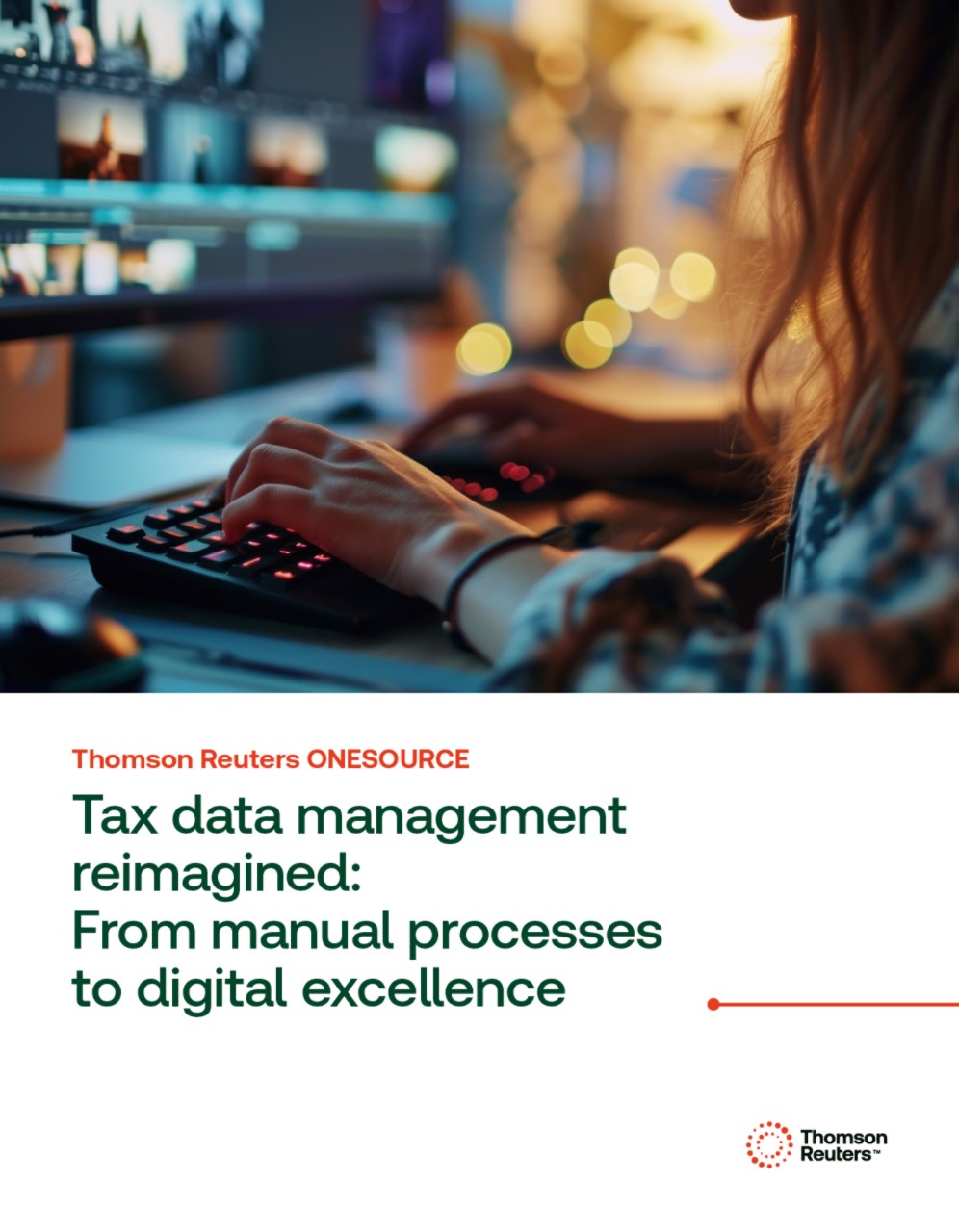Highlights:
|
More than perhaps any other business department, tax teams rely heavily on data. From compiling tax returns, to compliance reporting, to providing visibility over the impact of liabilities on business operations, having up-to-date, complete and accurate data at your fingertips is vital.
Yet too often, direct tax professionals are either drowning in data – or they can find it hard to get hold of the information they need when they need it,because it comes from disparate sources.
And gaining insights from that disparate data to inform the wider business strategy is a whole other story. Furthermore, they are frequently slowed down by manual, inefficient processes when dealing with data that prevent them from spending time on more important tasks that could add value to the business.
It’s time to get organized. In today’s data-driven age, organizations cannot afford to manage their data in a purely reactive, much less chaotic, way. Regulators and tax authorities expect tax calculations and submissions to be digital and seamless, businesses require transparency and insight into how their tax position could affect operations at all times, and tax professionals want to work smarter.
Developing a data management strategy
Many back office business functions such as finance and accounting are undertaking technological transformation programs, in part to leverage the data they hold. As this happens, tax teams must have a seat at the table when decisions are made about approaches to data and how to implement new tech tools. Tax professionals should play an active role in determining the data management strategy and making the business case for any tech investments if they want to ensure that new systems meet their needs.
In doing so, key factors to consider include:
1. Centralizing data storage
- It’s often the case that tax data is stored in many different places – in spreadsheets, on emails, embedded within documents, or hidden away in various files and databases. Data must therefore be collated from different systems, cleaned up so that it is consistent, accurate and relevant, structured in an appropriate way, and stored in a secure central repository that can be accessed easily as required. This may take time to do properly upfront, but it is fundamental to the success of the entire project.
2. Integrating disparate systems
- Connectivity between different systems the business uses is critical here, so that information can flow smoothly from diverse software programs and applications, such as HR, accounting and payroll systems, as well as digital tax systems, and into the centralized data warehouse – so that tax specialists can access it easily. Choose tech tools that allow APIs (application programming interfaces) to ‘plug in’ to other systems to share data. This also encourages greater collaboration between departments.
3. Using specialist tools
- Generic applications like Excel spreadsheets are all very well, but they have serious limitations when it comes to handling the complexities of modern tax regulations. Tax professionals ideally need specialist tools that are designed for their requirements.
4. Harnessing automation
- Today, many of the manual processes and workflows that tax specialists have traditionally had to do themselves – from mundane, routine tasks to more complex work like tax calculations – can be delegated to technology that can automate them. This saves significant time and minimizes the risk of human error.
5. Leveraging data analytics and AI
- Tech tools can also carry out advanced data analytics, with findings presented via dashboards and other visualization tools that make the data meaningful and simple to understand. The advent of artificial intelligence (AI) has the potential to turbocharge the insights that can be gleaned, making it even easier to spot trends or highlight potential issues, so that you can make informed decisions, reduce risk and identify opportunities – but only if the underlying data is properly structured.
6. Being dynamic and flexible
- Tax requirements and regulations can change rapidly, as can your business, and complying with a patchwork of different rules across multiple jurisdictions can be challenging. Your data management framework must be flexible enough to cope with the shifting tax compliance landscape, and dynamic enough to make sure that updates to rules or changes in circumstances are automatically accommodated.
7. Implementing robust data governance and security
- Quality and security of data are clearly paramount, so you will need a robust data architecture that prioritizes these concerns. For example, does the tech solution you are considering have leading-edge security measures built in, and does it allow for granular permissions to ensure that the right people can access what they need? What oversight mechanisms do you need to put in place to make sure that data is being collated and stored as it should be?
8. Training tax professionals
- Technology is an extremely powerful tool to enhance human capabilities, but it’s important to remember that staff need to be properly trained on how to use it, and to understand how it can empower them to do an even better job. For example, tax specialists may need to know how to filter data analytics in line with certain parameters or customize reports, or be guided through how to interpret the information it gives them so they can turn it into valuable business intelligence.
Tax data is a critical business asset, but one which is still too often under-utilized. According to the Thomson Reuters Institute 2024 State of the Corporate Tax Department report, only 26% of respondents indicated they had implemented a tax data management system, while 80% said their departments spend less than a quarter of their budget on tax technology.
The key to organizing data for tax departments
Tax departments can future-proof themselves and carve out a greater role as a valuable partner within the business by harnessing the power of data, embracing analytics and leveraging insights to help refine strategy and enhance decision-making. Done well, a tax data management strategy supported with robust tech tools will increase the essential efficiency, compliance, visibility and agility all businesses need.

Tax data management reimagined: From manual processes to digital excellence
Download our white paper today to realize the power of your tax data
Access full report ↗








